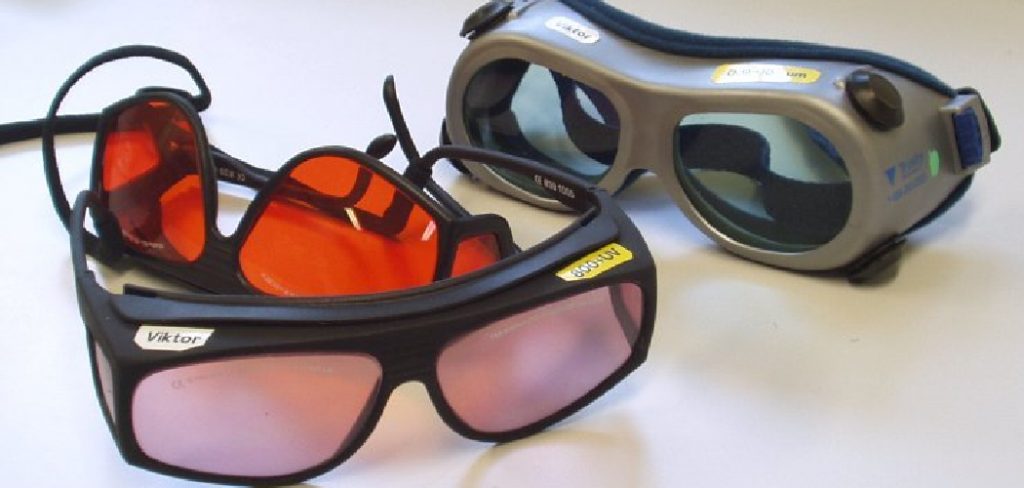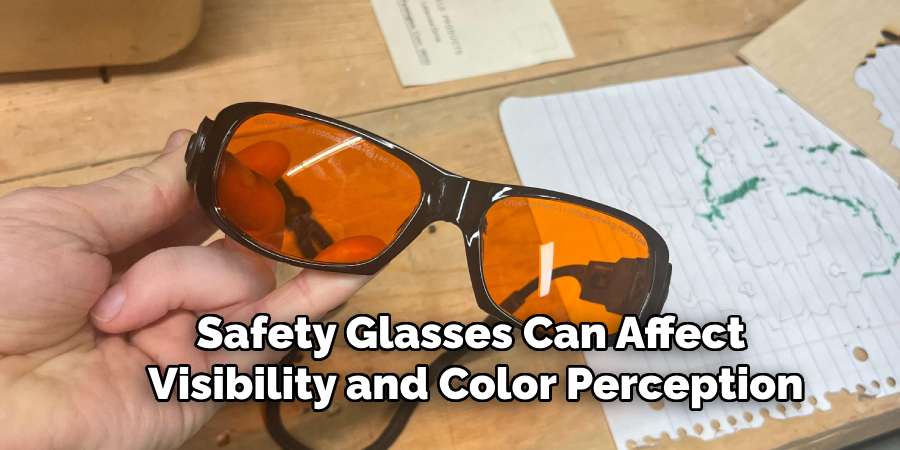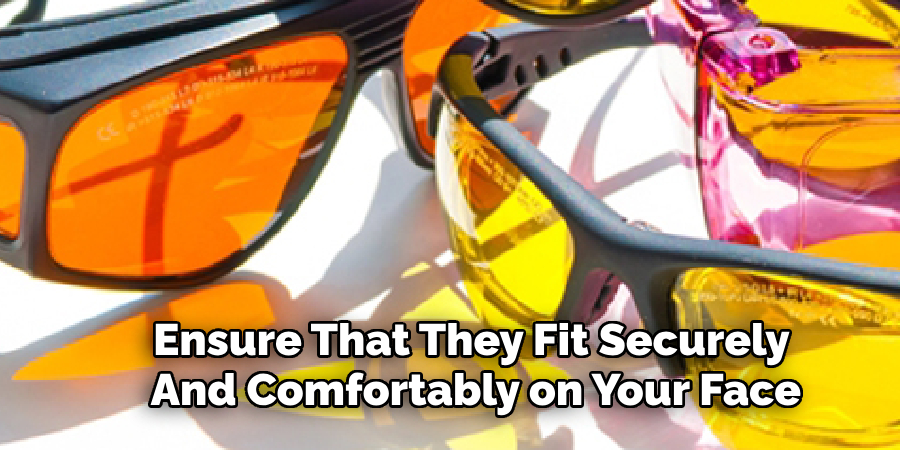Choosing the right laser safety glasses is crucial for protecting your eyes from harmful laser radiation in various settings, including medical, industrial, and scientific environments. Laser safety glasses are designed to filter out specific wavelengths of laser light, preventing serious eye injuries that can result from direct or scattered laser exposure. The selection process involves understanding the laser type, wavelength, and power level you will be working with, as well as the optical density (OD) required for adequate protection.

Additionally, comfort and fit are important factors to ensure the glasses can be worn for extended periods without discomfort. Ensuring that the safety glasses meet industry standards and certifications is also vital for guaranteeing their effectiveness. This guide provides essential tips and considerations for how to choose laser safety glasses, emphasizing the importance of protecting your vision while working with or around lasers.
Importance of Laser Safety Glasses for Eye Protection
Laser safety glasses are an indispensable component of personal protective equipment when working with lasers. The human eye is highly sensitive to laser radiation, which can cause severe damage to the retina, cornea, and lens, potentially leading to permanent vision loss. Even brief exposure to scattered laser light can result in significant injury. Laser safety glasses are specifically designed to absorb or block hazardous laser wavelengths, thereby mitigating the risk of eye damage.

They provide a reliable barrier between your eyes and harmful laser emissions, ensuring that activities involving lasers can be conducted safely. By wearing these glasses, professionals in fields such as healthcare, manufacturing, and research can maintain compliance with safety regulations and protect their most important sensory organ. Hence, the continuous use and proper selection of laser safety glasses are not just recommended but essential for safeguarding ocular health.
Types of Lasers
Understanding the different types of lasers is fundamental in selecting the appropriate laser safety glasses. Lasers can be categorized based on their medium, which can be solid, liquid, gas, or semiconductor.
Solid-State Lasers
Solid-state lasers use a solid medium, such as a crystal or glass, doped with rare earth elements. An example is the Neodymium-doped Yttrium Aluminum Garnet (Nd:YAG) laser, which emits light at a wavelength of 1064 nm. These lasers are commonly used in medical procedures, industrial cutting, and scientific research.
Gas Lasers
Gas lasers utilize a gas-filled tube as the medium. The Carbon Dioxide (CO2) laser is a widely recognized type, operating at a wavelength of 10.6 micrometers. It’s frequently used in medical surgeries, cutting, and engraving. Another popular gas laser is the Helium-Neon (HeNe) laser, emitting visible red light at 632.8 nm, often used in alignment and measurement applications.
Liquid Lasers
Also known as dye lasers, liquid lasers use an organic dye solution as the lasing medium. These lasers are notable for their tunability, allowing them to emit a wide range of wavelengths. They are typically used in spectroscopy and medical diagnostics due to their flexibility in wavelength selection.
Semiconductor Lasers
Semiconductor lasers, or diode lasers, utilize semiconductor materials that emit laser light when electrically stimulated. These lasers are commonly found in everyday technology, such as barcode scanners, optical disk drives, and laser pointers. Depending on the specific materials used, they can produce a variety of wavelengths, from visible to infrared.
10 Methods How to Choose Laser Safety Glasses
1. Understand the Laser Specifications
Before selecting laser safety glasses, it is essential to understand the specific characteristics of the laser you will be working with. Key specifications to consider include the wavelength, power output, and type of laser (e.g., continuous wave or pulsed). The wavelength, measured in nanometers (nm), is particularly important as it determines the necessary optical density (OD) for adequate protection. Consulting the laser’s technical manual or manufacturer can provide this information. Understanding the laser specifications ensures that you choose glasses that offer the appropriate level of protection.

2. Determine the Required Optical Density (OD)
Optical Density (OD) is a critical factor in choosing laser safety glasses. OD measures the attenuation of laser light by the lenses, indicating their ability to protect against specific wavelengths. The higher the OD, the greater the level of protection. For example, OD 3 provides an attenuation factor of 1,000, while OD 6 offers a factor of 1,000,000. The required OD depends on the laser’s power and wavelength. Calculating the necessary OD ensures that your glasses provide adequate protection, preventing potential eye damage.
3. Consider the Wavelength Range
Laser safety glasses are designed to protect against specific wavelength ranges. It is crucial to select glasses that cover the wavelength of the laser you are using. Glasses that protect against multiple wavelengths are available for situations involving different types of lasers. Ensure that the glasses provide coverage for the entire range of wavelengths emitted by the laser. Choosing glasses with the correct wavelength range ensures comprehensive protection against laser exposure.
4. Check Compliance with Safety Standards
Ensure that the laser safety glasses comply with relevant safety standards and certifications. In the United States, the American National Standards Institute (ANSI) standard Z136.1 outlines the requirements for laser safety. European standards include EN 207 and EN 208. Compliance with these standards guarantees that the glasses have been tested and verified for their protective capabilities. Checking for certifications ensures that the glasses meet established safety criteria and provide reliable protection.
5. Evaluate the Lens Material
The material of the lenses plays a significant role in the performance and durability of laser safety glasses. Common materials include polycarbonate, glass, and laminated glass. Polycarbonate lenses are lightweight and offer good impact resistance, making them suitable for most applications. Glass lenses provide excellent optical clarity and higher resistance to scratching and chemical damage. Laminated glass combines the benefits of both materials. Evaluating the lens material helps you choose glasses that offer the best combination of protection, comfort, and durability for your specific needs.
6. Consider the Frame Design and Comfort
The frame design and comfort of laser safety glasses are important factors, especially if you will be wearing them for extended periods. Look for frames that fit securely and comfortably on your face. Adjustable features, such as nose pads and temple arms, enhance comfort and ensure a proper fit. Wraparound designs offer additional protection by covering the sides of the eyes. Consider the weight of the glasses as well, as lighter frames are more comfortable for prolonged use. Choosing glasses with a comfortable and secure frame design ensures that you can wear them consistently without discomfort.
7. Assess the Visibility and Color Perception
Laser safety glasses can affect visibility and color perception, which is crucial in certain applications. While protecting against harmful wavelengths, the glasses should still allow adequate visibility to perform tasks safely and accurately. Some glasses are designed to minimize color distortion, which is important in fields like medical procedures or laboratory work. Assessing the visibility and color perception of the glasses ensures that you can perform your tasks effectively while maintaining eye protection.

8. Consider Anti-Fog and Scratch-Resistant Features
Anti-fog and scratch-resistant features are important for maintaining clear vision and prolonging the lifespan of laser safety glasses. Anti-fog coatings prevent the lenses from fogging up in humid or temperature-variable environments, ensuring consistent visibility. Scratch-resistant coatings protect the lenses from damage caused by regular use and cleaning. These features enhance the durability and usability of the glasses, making them more reliable and long-lasting. Considering these additional features ensures that your glasses remain functional and clear over time.
9. Consult with Experts and Manufacturers
Consulting with laser safety experts, manufacturers, or suppliers can provide valuable insights and recommendations tailored to your specific needs. Experts can help you understand the technical specifications and requirements for your laser applications. Manufacturers and suppliers can provide information on different models, features, and pricing options. Seeking professional advice ensures that you make an informed decision and select the most appropriate laser safety glasses for your needs.
10. Perform a Fit and Function Test
Before making a final decision, perform a fit and function test with the laser safety glasses. Ensure that they fit securely and comfortably on your face without slipping. Test the visibility and color perception to ensure they meet your requirements. If possible, use the glasses in a controlled environment with the actual laser to verify their protective capabilities. Performing a fit and function test ensures that the glasses meet all your safety, comfort, and functional requirements.

Conclusion
In conclusion, choosing the right laser safety glasses involves a thorough understanding of various factors to ensure optimal protection and comfort. Start by understanding the laser specifications and determining the required Optical Density (OD) for adequate protection. Ensure the glasses cover the appropriate wavelength range and comply with relevant safety standards. Evaluate the lens material, considering options like polycarbonate and glass for their durability and clarity. The frame design and comfort are crucial for extended wear, so choose adjustable and secure designs. Thanks for reading, and we hope this has given you some inspiration on how to choose laser safety glasses!
About
Safety Fic is a distinguished figure in the world of Diy design, with a decade of expertise creating innovative and sustainable Diy solutions. His professional focus lies in merging traditional craftsmanship with modern manufacturing techniques, fostering designs that are both practical and environmentally conscious. As the author of diy, Safety Fic delves into the art and science of Safety Fic-making, inspiring artisans and industry professionals alike.
Education RMIT University
(Melbourne, Australia) Associate Degree in Design (Safety Fic) Focus on sustainable design, industry-driven projects, and practical craftsmanship. Gained hands-on experience with traditional and digital manufacturing tools, such as CAD and CNC software.
Nottingham Trent University
(United Kingdom) Bachelor’s in diyfastly.com and Product Design (Honors) Specialized in product design with a focus on blending creativity with production techniques. Participated in industry projects, working with companies like John Lewis and Vitsoe to gain real-world insights.
Publications and Impact
In diy, Safety Fic his insights on indoor design processes, materials, and strategies for efficient production. His writing bridges the gap between artisan knowledge and modern industry needs, making it a must-read for both budding designers and seasoned professionals.
